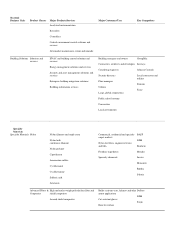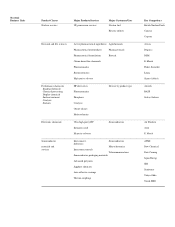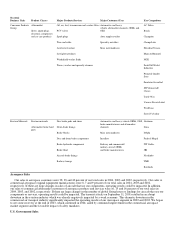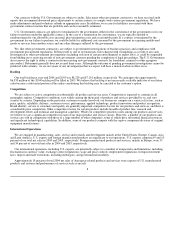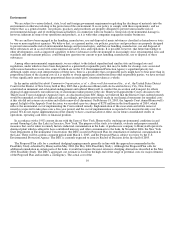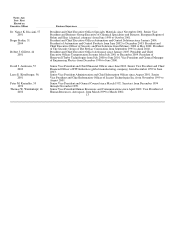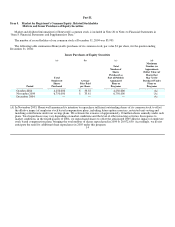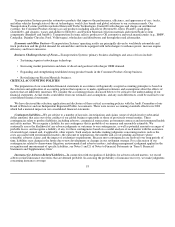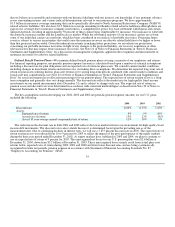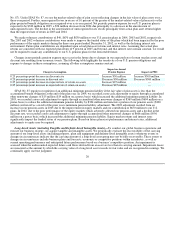Honeywell 2004 Annual Report Download - page 23
Download and view the complete annual report
Please find page 23 of the 2004 Honeywell annual report below. You can navigate through the pages in the report by either clicking on the pages listed below, or by using the keyword search tool below to find specific information within the annual report.
Environment
We are subject to various federal, state, local and foreign government requirements regulating the discharge of materials into the
environment or otherwise relating to the protection of the environment. It is our policy to comply with these requirements, and we
believe that, as a general matter, our policies, practices and procedures are properly designed to prevent unreasonable risk of
environmental damage, and of resulting financial liability, in connection with our business. Some risk of environmental damage is,
however, inherent in some of our operations and products, as it is with other companies engaged in similar businesses.
We are and have been engaged in the handling, manufacture, use and disposal of many substances classified as hazardous or toxic
by one or more regulatory agencies. We believe that, as a general matter, our policies, practices and procedures are properly designed
to prevent unreasonable risk of environmental damage and personal injury, and that our handling, manufacture, use and disposal of
these substances are in accord with environmental and safety laws and regulations. It is possible, however, that future knowledge or
other developments, such as improved capability to detect substances in the environment or increasingly strict environmental laws and
standards and enforcement policies, could bring into question our current or past handling, manufacture, use or disposal of these
substances.
Among other environmental requirements, we are subject to the federal superfund and similar state and foreign laws and
regulations, under which we have been designated as a potentially responsible party that may be liable for cleanup costs associated
with various hazardous waste sites, some of which are on the U.S. Environmental Protection Agency's superfund priority list.
Although, under some court interpretations of these laws, there is a possibility that a responsible party might have to bear more than its
proportional share of the cleanup costs if it is unable to obtain appropriate contribution from other responsible parties, we have not had
to bear significantly more than our proportional share in multi-party situations taken as a whole.
In the matter entitled Interfaith Community Organization, et al. v. Honeywell International Inc., et al., the United States District
Court for the District of New Jersey held in May 2003 that a predecessor Honeywell site located in Jersey City, New Jersey
constituted an imminent and substantial endangerment and ordered Honeywell to conduct the excavation and transport for offsite
disposal of approximately one million tons of chromium residue present at the site. Honeywell appealed the Court's decision to the
Third Circuit Court of Appeals (Appeals Court). As disclosed in prior SEC filings, we believed that the District Court-ordered remedy
would be remanded, reversed or replaced and, accordingly, provisions previously made in our financial statements for remedial costs
at this site did not assume excavation and offsite removal of chromium. On February 18, 2005, the Appeals Court denied Honeywell's
appeal. In light of the Appeals Court decision, we recorded a pre-tax charge of $278 million in the fourth quarter of 2004, which
reflects the incremental cost of implementing the Court-ordered remedy. Implementation of the excavation and offsite removal
remedy is expected to take place over a five-year period, and the cost of implementation is expected to be incurred evenly over that
period. We do not expect implementation of the remedy to have a material adverse effect on our future consolidated results of
operations, operating cash flows or financial position.
In accordance with a 1992 consent decree with the State of New York, Honeywell is studying environmental conditions in and
around Onondaga Lake (the Lake) in Syracuse, New York. The purpose of the study is to identify, evaluate and propose remedial
measures that can be taken to remedy historic industrial contamination in the Lake. A predecessor company to Honeywell operated a
chemical plant which is alleged to have contributed mercury and other contaminants to the Lake. In November 2004, the New York
State Department of Environmental Conservation (the DEC) issued its Proposed Plan for remediation of industrial contamination in
the Lake. There will be a public comment period until March 1, 2005, and the Proposed Plan is subject to review by the U.S.
Environmental Protection Agency. The DEC is currently expected to issue its Record of Decision in the first half of 2005.
The Proposed Plan calls for a combined dredging/capping remedy generally in line with the approach recommended in the
Feasibility Study submitted by Honeywell in May 2004 (the May 2004 Feasibility Study). Although the Proposed Plan calls for
additional remediation in certain parts of the Lake, it would not require the most extensive dredging alternatives described in the May
2004 Feasibility Study. The DEC's aggregate cost estimate is based on the high end of the range of potential costs for major elements
of the Proposed Plan and includes a contingency. The actual cost of the
10




